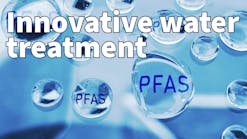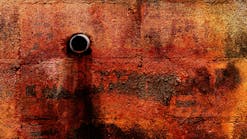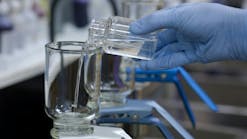Recommendations for Improving QA/QC Practices in Trenchless Rehab
The EPA report, “Quality Assurance and Quality Control Practices for Rehabilitation of Sewer and Water Mains” summarizes the research findings and discusses gaps or needed improvements that could and/or should be made to QA/QC steps currently being employed on trenchless rehab projects.
Earlier this year the US Environmental Protection Agency’s Aging Water Infrastructure Research Program released a report reviewing the quality assurance and quality control (QA/QC) practices and acceptance testing for trenchless rehabilitation systems used in drinking water distribution networks and wastewater collection systems.
The EPA report, “Quality Assurance and Quality Control Practices for Rehabilitation of Sewer and Water Mains” summarizes the research findings and discusses gaps or needed improvements that could and/or should be made to QA/QC steps currently being employed on trenchless rehab projects.
A successful QA/QC program is one that measures the finished installation in terms of the desired and/or required long-term performance requirements. This means tailoring the QA/QC program to be technology-specific and considering its role in the new soil-structure interaction system that is created by the improvements.
As part of this effort, the design engineer must review the current pipeline or structure’s as-built information and current condition assessment. Parameters affecting the service life of the proposed improvements such as hydrostatic buckling forces must be properly investigated and communicated in the contract documents. Site-specific issues related to the local soils, past repairs, etc. must be accurately conveyed to the installation contractor.
In all cases, the owner should require that a post-installation CCTV inspection be conducted with the camera at the approximate center of the pipeline, while traveling no faster than 30 feet per minute with adequate lighting and no water in the invert to allow for a full 360 view of the finished liner.
A CCTV inspection also should be conducted by the asset management team to code the condition of the rehabilitated pipeline in a standardized format and update the utility’s asset database as soon as is practical after the project is accepted. A follow-up inspection should be made 30 to 60 days prior to the end of the installation warranty period again coding the new pipeline’s condition so that any construction-related defects can be identified and scheduled for repair under warranty by the contractor.
Based upon a review of the current QA/QC practices in use and considering the future needs of well-constructed asset management programs, the following recommendations were developed for a best practice QA/QC system listed by technology.
Cured-In-Place Pipe
A pre-lining CCTV should be conducted to assess the current pipe condition and to investigate the line for obstructions that would prevent liner insertion such as offset joints, protruding service connections, or collapsed pipe sections. Point repairs may be needed to address any identified obstructions.
A trained and qualified inspector should perform the following activities during the construction observation phase for CIPP projects:
-- Upon arrival of the saturated tubes on the project site, require tube-specific saturation logs to confirm a full saturation was made based upon the earlier submittals; if not, reject any tube suspected of containing less than 97% of the manufacturer’s recommended quantity of resin.
-- Require an in situ cured sample for each installation performed, including UV light cured installations. Restrained samples should come from an intermediate manhole if possible. Measure the finished thickness of the liner in place using a non-destructive testing gage such as an ultrasonic thickness gage.
-- Review results of the cured sample testing. The sample testing should include verifying the flexural modulus, the flexural strength, and the tensile strength. If elongation at break during the tensile strength testing (ASTM D638) is larger than that stated for the resin material per its technical data sheet (TDS), require additional testing to verify that the proper amount of resin is present in the liner and that the porosity of the installed liner is in keeping with the specified water tightness performance expectation in the contract documents.
Close Fit Liner Systems
Close fit liner systems are promoted as being relatively easy to install and less vulnerable to deviations in their installed mechanical properties as they are manufactured in a controlled plant environment. The following steps are recommendations of a best practice for the QA/QC of close fit liner installations:
Conduct a CCTV inspection to verify that the pipe is ready to receive the lining, to note if there are any pipe openings not detected, to see if there are any protruding services or other defects that would preclude lining, and to track the location of service connections to be renewed.
A trained and qualified inspector should perform the following activities during the construction observation phase for close fit lining projects:
-- Upon arrival of the lining materials on the project site, the inspector should confirm that the materials have the required markings identifying them as the correct materials and that they are of the correct thickness.
-- Require that an in situ sample be made during the processing of each installation using a mold of like diameter.
-- Have the sample tested to verify the following:
- Thickness includes looking for areas of uneven stretching
- Mechanical properties (should match those performed at the time of manufacture)
- No residual stresses are present (perform an oven test on a ring of the reformed material to ensure that the liner stays round and is dimensionally stable as specified in ASTM F1057 Practice for Estimating the Quality of Extruded Poly (Vinyl Chloride) (PVC)Pipe by the Heat Reversion Technique).
-- Require that a post-installation CCTV inspection be made. Excessive local stretching and poor fit at the lateral connections (not tight with the host pipe) should be given a thorough review and visual documentation by the camera operator.
Sprayed-on Polymeric Coating
The recommended best practices for QA/QC of a sprayed-on polymeric coating system are as follows:
-- Upon arrival of the raw materials on the project site, the inspector should review the products’ labeling to ensure that the correct products have been delivered.
-- Prior to commencing work, review with the project superintendent the proposed methodology for cleaning and preparing the pipe wall for lining. This will be dependent upon the existing pipeline’s material and the current condition of the wall structure. The pipe wall must be completely dry and competent (solid) to accept the lining material and achieve the proper adherence between the polymer and the host pipe material.
-- Conduct a CCTV inspection of the pipeline to verify that there is no standing water and the pipe is suitably free of debris just prior to applying the polymeric coating.
-- Require the contractor to prepare samples in a manner consistent with the application technique being used. Curing should be done in the same environment in which the lining will be cured.
-- Review results of the cured sample testing. The sample should be tested for bond strength, mechanical properties, and porosity. In situ thickness should also be measured using an ultrasonic thickness gage calibrated for the particular polymeric material being applied.
-- Require that the post-installation for non man-entry size piping CCTV inspection be conducted. Blemishes in the coating and other deviations from an ideal installation should be given a thorough review by the camera. For man-entry size piping, the inspection should also include still photos of questionable areas.
Grout-In-Place Liner
The inspector should perform the following activities during the construction observation phase for GIPL projects:
-- Upon arrival of the lining materials on the project site, review the products’ labeling to ensure that the correct products have been delivered and that they are free from defects.
-- Prior to commencing work, review with the project superintendent the proposed methodology for cleaning and preparing the pipe wall for lining. This will be dependent upon the existing pipeline’s material and the current condition of the wall structure. The pipe wall should be clean with no active leaks that will affect the grout placement. The host pipe’s wall should be competent to accept the grout and achieve the proper interaction between the thermoplastic liner and the host pipe material.
-- Require a visual confirmation of the existing pipeline’s condition just prior to installation of the lining.
-- Once the lining material is in place, the grouting operation should be carried out in lifts per the technology manufacturer’s recommendations. Samples of the grout mixture should be taken at regular intervals throughout the grout’s placement. Curing of grout samples should be done in the host pipe’s environment or similar conditions.
-- Review results of the cured grout sample testing. The sample should be tested for compressive strength. Additionally, the entire length of the installation should be evaluated for the presence of voids in the grout zone. At a minimum, this should be done by “sounding” the liner surface with a small hammer; other non-destructive techniques such as ultrasonic testing should be used as they become available. Void areas greater than 5% of the circumference should be spot grouted.
Pipe Bursting
The inspector should perform the following activities during the construction observation phase for pipe bursting projects:
-- Upon arrival of the raw materials on the project site, review the products’ labeling to ensure that the correct products have been delivered and that they are free from defects.
-- Prior to commencing work, review with the project superintendent the proposed construction sequence and methodology for reconnecting the service laterals. Note that this will be somewhat dependent upon the existing pipeline’s material and how much upsizing (if any) is planned for the project.
-- Conduct a CCTV inspection of the pipe to verify that the diameter is consistent, that there are no unanticipated pipe bends or dips in the pipe and track location of connections.
-- During the bursting and pulling in of the new pipeline, the inspector should observe that the lengths of pipe are joined properly by butt fusion (where fused pipe is employed) and that no portion of the piping has a gash, blister, abrasion, nick, scar or other deleterious fault greater in depth than 10% of the pipe’s thickness. (Note: For pipes expected to perform under significant internal pressure, the control of scratches and gouges is much more important and should be more restrictive.)
-- Require that a post-installation CCTV inspection be conducted. Blemishes in the pipe wall and other deviations from an ideal installation should be given a thorough documentation by the camera operator.
Encouraging Best Practices
The rehabilitation of pipelines generally does not carry the same sense of importance for construction observation and as-built documentation when compared to new construction. In addition, it doesn’t afford the same opportunity for construction observation because access is often limited by nature for trenchless rehabilitation technologies to the ends of the pipe or a few access pits. This may discourage utilities from undertaking rehabilitation technologies even if they may cost less.
Better recognition is needed among utilities and vendors that trenchless rehabilitation technologies are part of a comprehensive re-building program for pipelines and structures. As utilities become aware of the benefits of more extensive data collection in the field and consistent documentation of as-built data, their focus on developing and maintaining successful QA/QC programs will increase.
WW
More WaterWorld Current Issue Articles
More WaterWorld Archives Issue Articles


